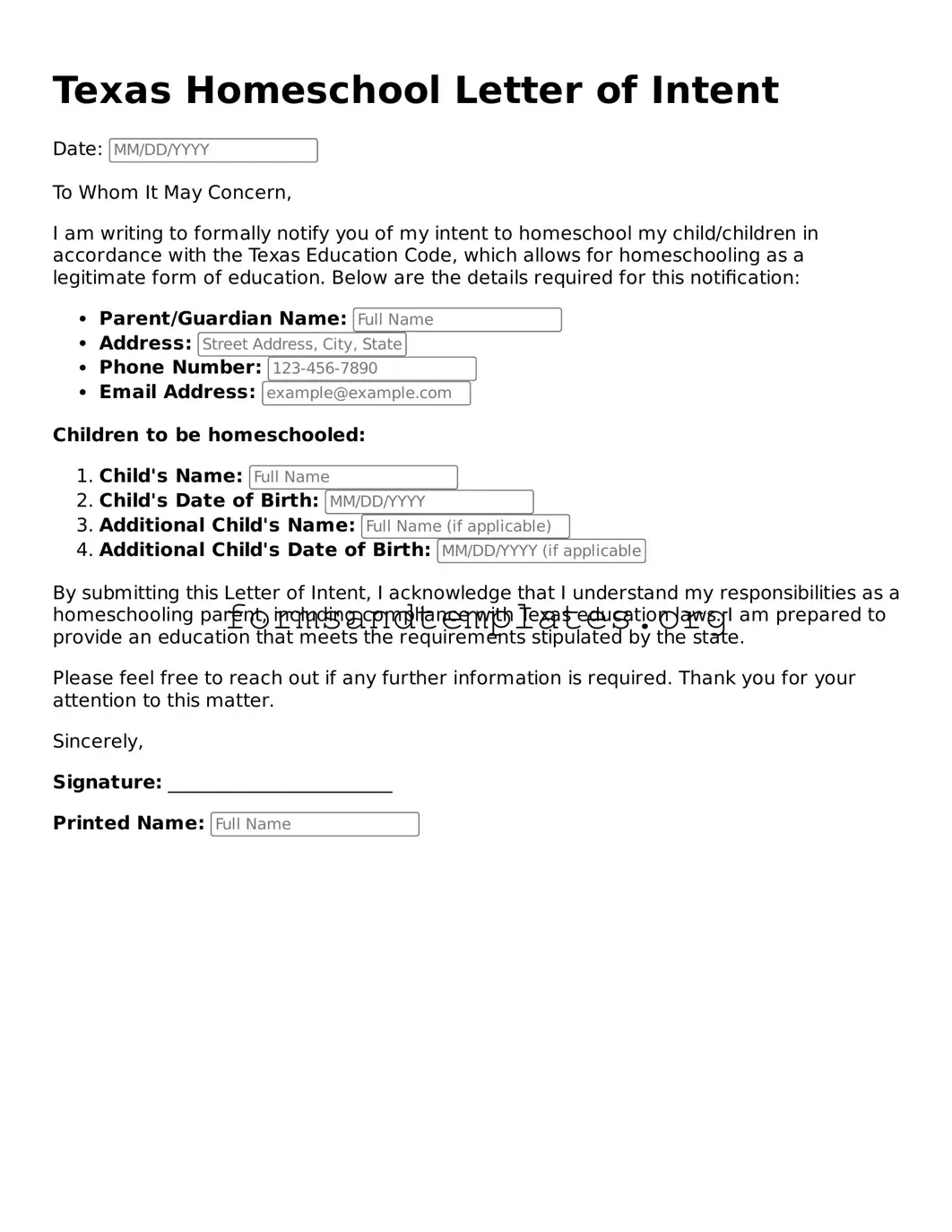Homeschool Letter of Intent Template for the State of Texas
The Texas Homeschool Letter of Intent form is a document that parents must submit to officially notify the state of their decision to homeschool their children. This form serves as a crucial step in ensuring compliance with Texas education laws. Completing this form is essential for parents who wish to embark on the homeschooling journey.
Take the first step in your homeschooling journey by filling out the Texas Homeschool Letter of Intent form. Click the button below to get started!
Access Editor Here
